Originally published November 1, 2019.
By Doug Trott
There are a lot of things we can’t grow in our climate and soil here in zone 4a in Starbuck, Minnesota. But I’m especially envious of some of the woody perennials I see other farmers growing – even at farms just a few hours south of us. As a result, I’m always looking for new woodies to try that are hardy here.
We’ve been growing ninebark, thornless raspberry, and smoke bush for years, and they’re staples for us. But there are many other shrubs that could work well as cuts. I’m going to cover a few that are new to us in this article.
By the way, you should absolutely have a copy of Woody Cut Stems for Growers and Florists by Lane Greer and John M. Dole in your library if you’re planning on growing woodies. And you should absolutely think outside the box.
It seems to me that woodies are more “standardized” than other cuts. There are common varieties and certain ways of doing things, for example standard lengths and growth stages at cutting, but you can often ignore those standards and offer something different.
For instance, Coralberry (Symphocarpus) has never produced berries well for me. But after a few years I realized it makes a fine, delicate foliage all summer long. I also sell most of my curly willow during the summer as a foliage cut, and not so much in the fall as a bare branch.
All of the woodies I’m going to mention in this article were purchased from Spring Meadow Nursery (SMN), and cultural information is from their web site. They have a fairly high order minimum, and assuming that you plant into landscape fabric (as we do), a batch of woodies including fabric will set you back about $2,000.
It’s always been a good investment for us – just the ninebark alone from our first batch (‘Diabolo’ and ‘Coppertina’) have brought in almost $3,000 this year. If you like to experiment, as we do, not every new woody will be a winner, but it still isn’t hard to come out ahead in a few years.
If you have significant deer pressure you really want to resolve that before investing in a lot of woodies. We didn’t realize we had a deer problem until we planted our first batch, and they continually ate some plants to the ground. We thought that getting a dog would keep the deer away, and it worked to the extent that we never had deer on our porch.
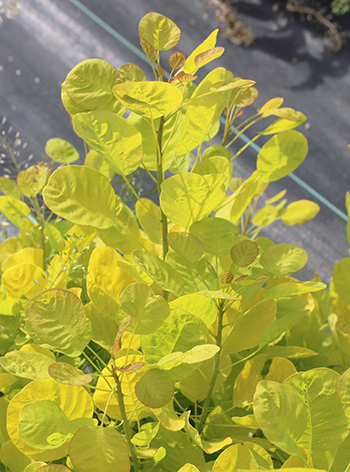
We finally learned about 3D deer fencing, which has worked extremely well. It’s basically two electric fences about three feet apart. The outside fence has one line, thirty inches off the ground and baited, and the inside fence has two lines, one about a foot high and the other five or six feet. Deer quickly learn that the fence is electric, and since they have poor depth perception, they’re afraid to jump or crawl to get past the fence.
It’s much less expensive than traditional deer fencing. We were only able to fence three sides of our farm, but it stopped almost all of the predation. This year we did have deer move onto our farm from the unfenced side, and do a little damage, so we’re working on routing more fencing to protect our growing area.
Now on to the woody perennials. All of these were purchased and planted in the spring of 2017. Production for most of these should really pick up in year four (2020), but even after just three years these four are showing great promise.
Gold Smokebush (Cotinus ‘Golden Spirit’)
Everyone is familiar with purple smokebush; I’ve had Cotinus ‘Grace’ for years and it’s been a good investment. I was able to cut a few bunches of Golden Spirit in 2018, and then this year about ten bunches (of five stems, as the stems are fairly thick), with half going to one wedding.
The rest just went on the van, but always found a home during our route – we never brought any back. It’s hardy to zone 4. I doubled my planting this year based on its reception last year. As a bonus, it’s one that the deer don’t seem to be interested in.
Pearl Bush (Exochorda ‘Snow Day Blizzard’)
Unlike the others in this list, Exochorda is grown for its spring blooms rather than its foliage. It appears similar to mock orange (Philadelphus), which is very popular. Demand exceeds my supply, and so I had my doubts when I ordered the Exochorda. Why would I want what is basically a mock orange without the great scent?
I learned why this year, the first year it’s bloomed for me. First, it came in a couple weeks earlier than the mock orange – I cut a few bunches at the end of May. Second, while my mock orange had a good bit of damage on the tips of its branches from the harsh winter, the Exorchorda was unscathed (it’s hardy to zone 4).
Third, it’s just prettier! It has larger blooms, with a little bit of green in the center, and they’re separated from the branch by short racemes, unlike mock orange blooms which are basically attached directly to the branch. The racemes cause a slight downward arc to the blooms, making them appear more delicate.
Before the blooms open, they do look like large pearls, similar to how balloon flowers (Platycodon) appear before opening. Compared to the others on this list, Exochorda takes a little longer to get to production size. Nonetheless, the next order of woodies I plant is going to include a lot more.

Red Twig Dogwood (Cornus ‘Ivory Halo’)
In spite of being a red twig dogwood, this one isn’t grown for bare branches, but for its beautiful variegated foliage. In my experience, florists love variegated foliage, and that has proven to be the case with ‘Ivory Halo’. It’s hardy to zone 3, and like most dogwoods, is a fast grower and prolific. I pruned it hard early this spring like I do the other dogwoods, and it responded well.
It has a couple downsides – while the SMN website indicates that it’s deer resistant, I would classify it as deer candy. It appeared to be their first choice this year, causing more branching but shorter stems than I would have liked. It’s also fairly susceptible to leaf spot toward the end of the summer (I think it’s Septoria), which doesn’t kill the plant but makes the stems unsellable.
You could spray, or just try to cut the heck out of it before the spots appear (my method). I harvested Ivory Halo from July 1st to September 3rd this year (over 300 stems), but for sure toward the end I was cutting around the leaf spots. If not for the deer, I could have cut a lot more, at least twice as much. I tripled my planting this year, spreading them out and planting them in more exposed, windy areas in hopes of mitigating the fungal problems.
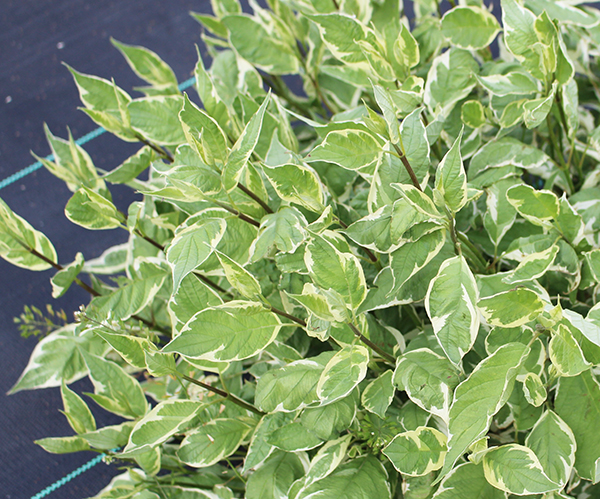
Honeysuckle Bush (Diervilla ‘Kodiak Orange’)
I’ve saved the best for last. I mentioned earlier that I grow a thornless raspberry, but I didn’t explain how wildly popular it is, and has been for years. I’ll have hundreds of stems go out for weddings every week in the spring, plus several florists have standing orders (it lasts a long time in the cooler). If you want some of my raspberry, you have to order it weeks in advance, as if you were ordering café au lait dahlias. Diervilla gives every indication of being just as popular.
I cut almost five hundred stems from June 13th to October 7th this year, after cutting a few bunches last year to show my customers. Mid-summer I had a couple florists tell me that they wanted every stem I cut for the remainder of the season (I made them share). I took it off my availability list, delivering a few bunches to them every week.
Those customers both had standing orders for the raspberry, but they told me that the Diervilla is their new favorite. It responds well to an early spring (or late winter) pruning, sending up taller branches. I had a little bit of deer damage, but its biggest fault is that it’s weak where it branches – a wind storm will cause some branches to break off.
Also, I’ve noticed it being used as a landscape planting, and so I have a little concern that if it becomes a very popular landscape plant it will likely become less popular as a cut. I put in 18 plants in 2017; this spring I planted 72 more (of both ‘Kodiak Orange’ and ‘Kodiak Red’), placing them in areas more protected from the wind.
Investigate these woodies and see if they’re good choices for you to grow, and even better, find some new ones that no one else is growing. A couple caveats – many of the best cultivars are patented, so you may not propagate them. If you think it’s OK because you’re not selling the propagated plants, I strongly recommend you ask your vendor if you don’t want to take my word for it.
And if you have limited space to store or transport full buckets, just be mindful that a bucket of foliage is worth a lot less than a bucket of flowers. If you find a new woody that makes a great cut – let me know!

Doug and his wife Robin started growing flowers on their farm in 2010, making bouquets on their kitchen table for the local grocery store. Flower farming became Doug's full-time job in 2014. Robin also breeds registered Katahdin sheep.

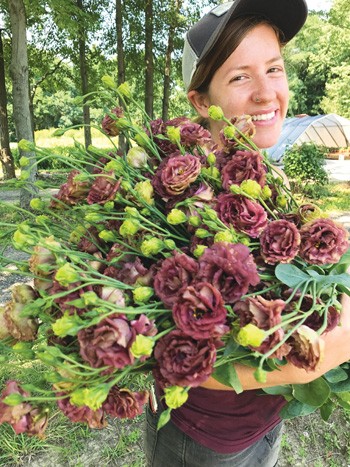 The pool of flower farmers is growing quickly it seems, leading to some changes in the industry. Most importantly, flower seeds, bulbs, and tubers are selling out fast, are in limited supply, or are not available altogether. Be sure to get your orders in on time, which is basically as soon as the season for that item is over.
The pool of flower farmers is growing quickly it seems, leading to some changes in the industry. Most importantly, flower seeds, bulbs, and tubers are selling out fast, are in limited supply, or are not available altogether. Be sure to get your orders in on time, which is basically as soon as the season for that item is over.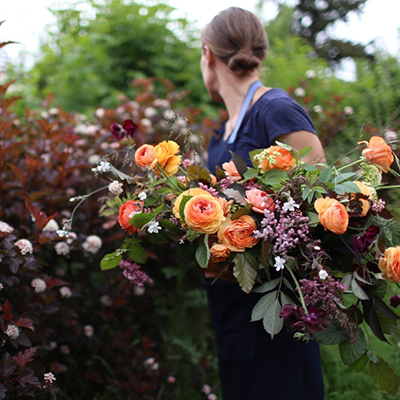
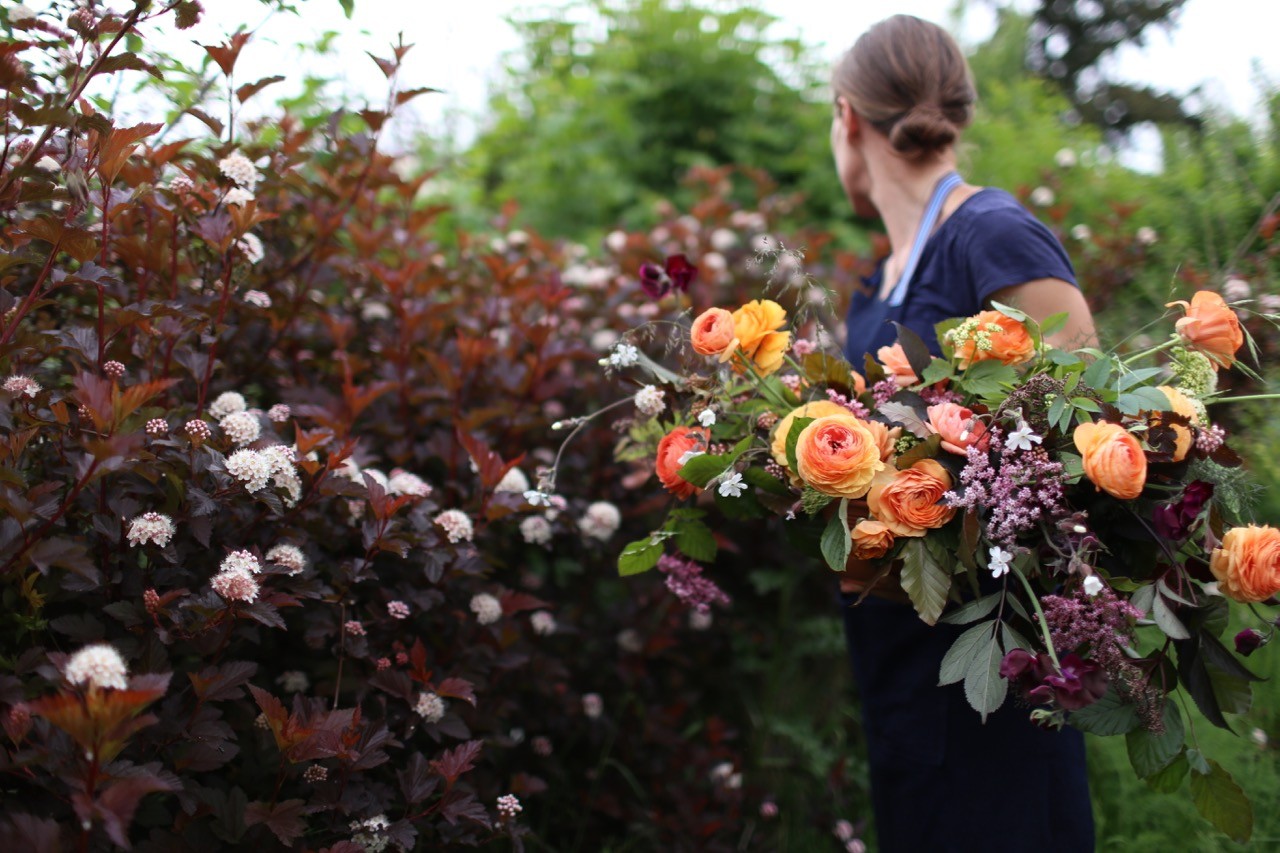 When Erin Benzakein and her family started growing flowers commercially eight years ago at Floret Flower Farm in Washington State’s Skagit Valley, perennials were an important part of the mix. After weed pressure and voles wreaked havoc on the perennials, they switched to annuals only. “We were focusing on high volume and annuals,” Benzakein said recently.
When Erin Benzakein and her family started growing flowers commercially eight years ago at Floret Flower Farm in Washington State’s Skagit Valley, perennials were an important part of the mix. After weed pressure and voles wreaked havoc on the perennials, they switched to annuals only. “We were focusing on high volume and annuals,” Benzakein said recently. 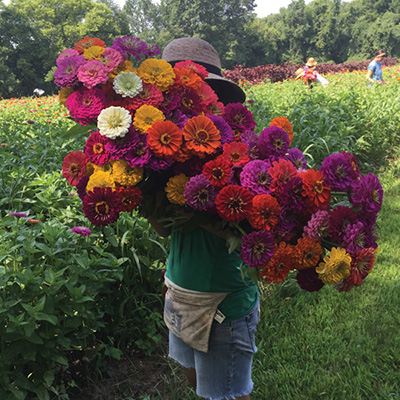
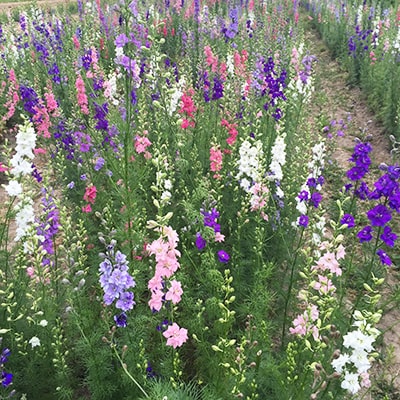
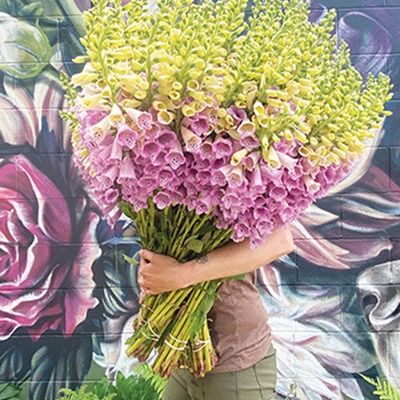
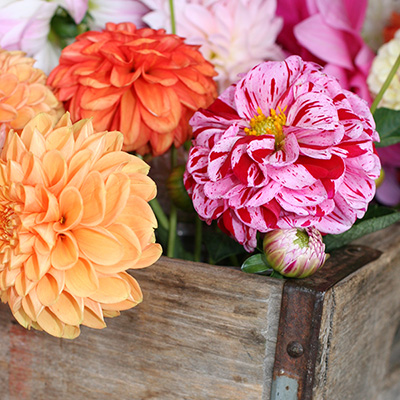



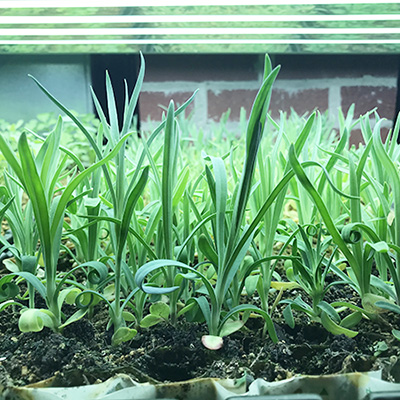
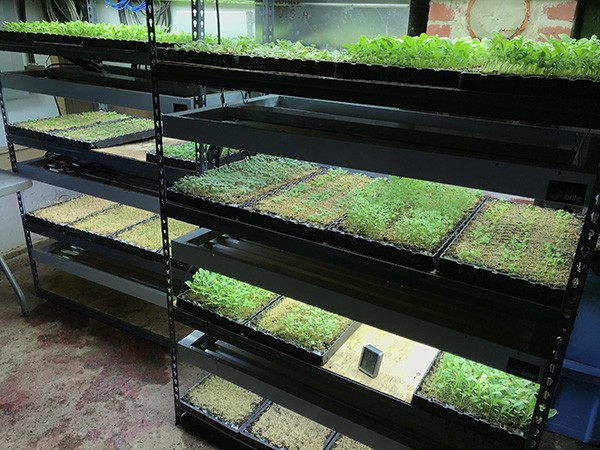 Have you ever lost precious seedlings in your greenhouse to frost? How about tossing a flat or two out due to heat stress or a missed watering? Or better still, stared at a tray of seeds that won’t germinate, with smoke coming out of your ears, because you’re sure someone (not you!) mis-watered them at a critical moment? Have you ever shrugged to yourself reading the growing instructions on a seed packet that says “Germinates best at 70 Fahrenheit” while standing in your 85-90 degree greenhouse? You’ve started to look into a germination chamber to solve some of these issues, but they look pricey and have limitations like not being able to handle as many flats as you’d like to start at once.
Have you ever lost precious seedlings in your greenhouse to frost? How about tossing a flat or two out due to heat stress or a missed watering? Or better still, stared at a tray of seeds that won’t germinate, with smoke coming out of your ears, because you’re sure someone (not you!) mis-watered them at a critical moment? Have you ever shrugged to yourself reading the growing instructions on a seed packet that says “Germinates best at 70 Fahrenheit” while standing in your 85-90 degree greenhouse? You’ve started to look into a germination chamber to solve some of these issues, but they look pricey and have limitations like not being able to handle as many flats as you’d like to start at once.
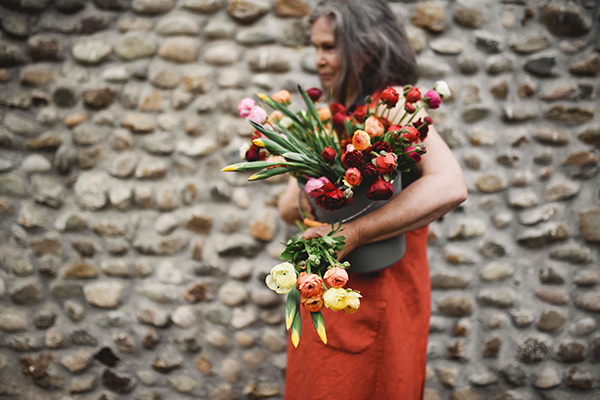 Lorna Jackson started flower farming intensely relatively later in life at Ninebark Farm on a century-old hayfield in Metchosin at the southern tip of Vancouver Island in British Columbia, Canada. Now 64, she plans to continue into her 70s. To keep going, she makes adaptations to ease the toll on her body.
Lorna Jackson started flower farming intensely relatively later in life at Ninebark Farm on a century-old hayfield in Metchosin at the southern tip of Vancouver Island in British Columbia, Canada. Now 64, she plans to continue into her 70s. To keep going, she makes adaptations to ease the toll on her body.
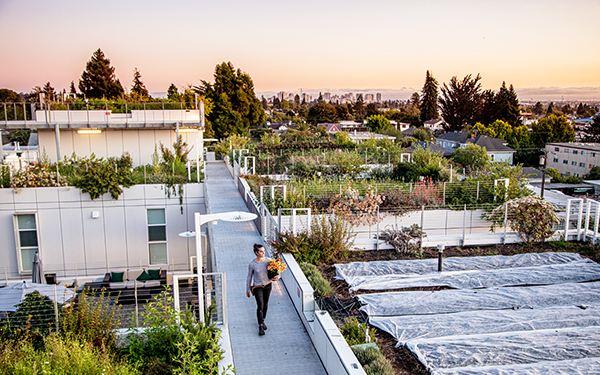 I own and operate Bluma Flower Farm, currently located on a rooftop in downtown Berkeley, California. Going into this year my plan was to try to replicate what I did the year before, one of Bluma’s best years yet. This would have been the first year I didn’t make any big changes. But then the pandemic hit and, of course, like many other businesses, I had to pivot and find ways to survive.
I own and operate Bluma Flower Farm, currently located on a rooftop in downtown Berkeley, California. Going into this year my plan was to try to replicate what I did the year before, one of Bluma’s best years yet. This would have been the first year I didn’t make any big changes. But then the pandemic hit and, of course, like many other businesses, I had to pivot and find ways to survive. 
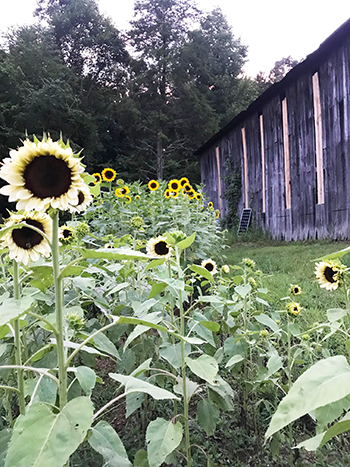 After spending years working in a corporate environment and managing key performance indicators, I was excited about the prospect of farming without the overhead of data analysis. Gone would be the management by objectives, the need to determine return on investment and other such details on which the corporate world revolves.
After spending years working in a corporate environment and managing key performance indicators, I was excited about the prospect of farming without the overhead of data analysis. Gone would be the management by objectives, the need to determine return on investment and other such details on which the corporate world revolves.
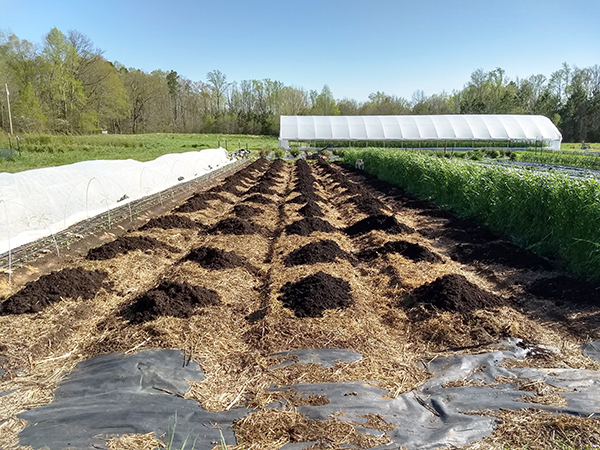 My wife, Megan, and I grow cut flowers on half an acre of a twelve-acre property in Hurdle Mills, NC. We are in the heart of tobacco country. When we bought our property in 2013, our sales contract stipulated that the farmer had the right to harvest that year’s tobacco crop. Based on our best guesses, that marked at least the 100th consecutive year of tobacco/wheat rotations on this property. The farmer was kind enough to disc in the tobacco stubble after the harvest.
My wife, Megan, and I grow cut flowers on half an acre of a twelve-acre property in Hurdle Mills, NC. We are in the heart of tobacco country. When we bought our property in 2013, our sales contract stipulated that the farmer had the right to harvest that year’s tobacco crop. Based on our best guesses, that marked at least the 100th consecutive year of tobacco/wheat rotations on this property. The farmer was kind enough to disc in the tobacco stubble after the harvest.
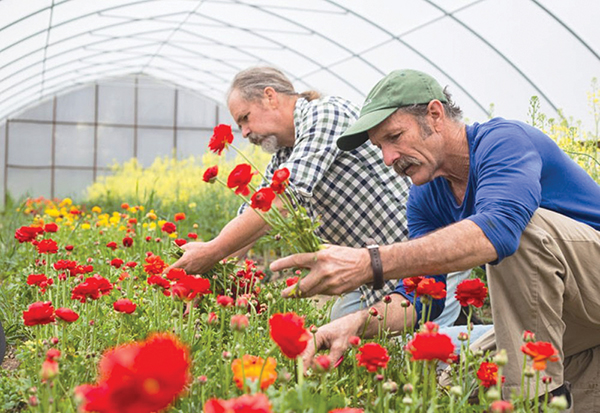 During the COVID era my usual travels have been curtailed. So, I got to thinking about what farms I had visited in the past that I knew pretty well, where a simple phone call could possibly stand-in for a proper on-farm interview and tour. First to my mind was Dripping Springs Garden, an oasis of natural and man-made beauty that is the life’s work of a good friend of mine, Mark Cain, and his farm partner, Michael Crane.
During the COVID era my usual travels have been curtailed. So, I got to thinking about what farms I had visited in the past that I knew pretty well, where a simple phone call could possibly stand-in for a proper on-farm interview and tour. First to my mind was Dripping Springs Garden, an oasis of natural and man-made beauty that is the life’s work of a good friend of mine, Mark Cain, and his farm partner, Michael Crane.